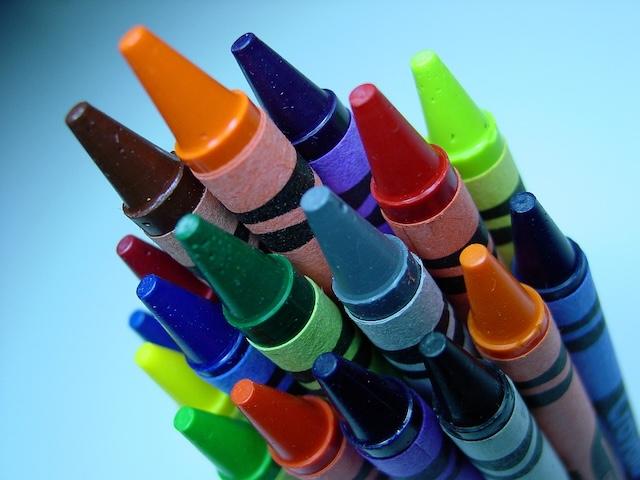Their smell brings back memories of childhood. They form a broken layer of crumbs in my children’s backpacks. Much to my frustration, I occasionally find them smeared across the furniture and walls. What are they? Crayola crayons. How did these particular crayons come to be such an iconic part of childhood?
In 1885, Edwin Binney and his cousin C. Harold Smith took over the Peekskill Chemical Company from Binney’s father, renaming the company Binney and Smith. The company was known for producing pigments, particularly carbon black used in tires and printers’ ink and a red oxide popular for barns. As a byproduct of processing carbon black, the company created a high quality, inexpensive slate pencil that was marketed to schools. This product was the company’s entry into the educational market.
Binney and Smith were attentive to teachers’ requests for their classrooms. One common complaint was the amount of dust created when writing with chalk crayons on the chalk board. The dust clouded the air and covered the teacher’s hands and clothes. In 1902, the company introduced An-Du-Septic Dustless Blackboard Crayons, an instant favorite among teachers.
Another request was higher quality wax crayons for their students that were more affordable than the crayons made for artists. Binney and Smith was already manufacturing a low-cost industrial marking crayon called Stayonal. However, some of the ingredients were toxic and therefore not suitable for children. Binney assigned his chemists the task of inventing affordable crayons that were non-toxic.
By 1903, their new crayons were being sold to schools. These crayons came in eight different colors. They were non-toxic and less brittle than other wax crayons. They wrote smoothly and left a bright pigment on the page, and they sold for only a nickel a box. Crayons this special needed a name to set them apart from others on the market. Binney’s wife, Alice, a former school teacher, came up with the name Crayola by combining the French words for chalk and oily (craie and ola).
In 1958, the classic 64 color pack with stadium seating and a built-in sharpener was introduced. Over the many years there have been around 1,500 different colors of Crayola crayons with 148 unique colors. As any teacher will tell you, no other crayon can match it for coloring quality and durability. So please just give them the Crayolas that they requested. No substitutes will do.
Crystal Kelly is a feature writer for Bizarre Bytes with those unusual facts that you only need to know for Trivial Pursuit or Jeopardy or to stump your in-laws.

